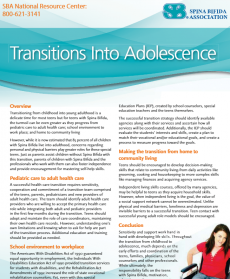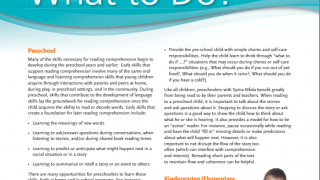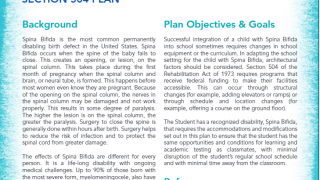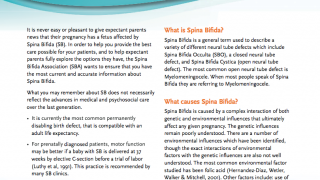Transitioning from childhood into young adulthood is a delicate time for most teens. For teens with Spina Bifida, the turmoil can be even greater as they transition from pediatric to adult health care; from the school environment to the workplace; and from living at their parents’ home to community living.
Just as all parents do their utmost to assist their children as they transition into adulthood, parents of children with Spina Bida and the professionals who work with them endeavor to foster their children’s independence by encouraging their mastery of self-help skills.
This information sheet covers:
- Steps that teens, parents, pediatricians and new providers of adult health care take to ensure a successful care transition.
- When to request services through an Individualized Education Plans (IEP).
- How to make the most of state-provided transition and vocational rehabilitation services.
- How independent living skills courses help teens acquire important household-management skills.
- How a strong social support network contributes to long-term independence.
This information does not constitute medical advice for any individual. As special cases may vary from the general information presented here, SBA advises readers to consult a qualified medical or other professional on an individual basis.
Tags



